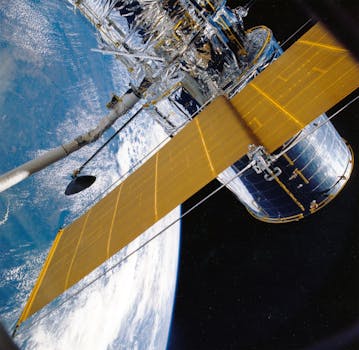
The Rise of Mega-Constellations: Latest Updates in Satellite Telecommunications
The Rise of Mega-Constellations is revolutionizing the satellite telecommunications industry, with several companies launching thousands of satellites into low Earth orbit to provide global internet connectivity. The Focus Keyword The Rise of Mega-Constellations is an exciting development in the field of satellite telecommunications, with the potential to bring high-speed internet to remote and underserved areas around the world.
The concept of mega-constellations involves launching a large number of small satellites into low Earth orbit, which can provide a range of services including broadband internet, navigation, and Earth observation. These satellites are designed to be smaller and more affordable than traditional satellites, making them an attractive option for companies looking to provide global coverage.
History of Satellite Telecommunications
The use of satellites for telecommunications dates back to the 1960s, when the first commercial communications satellite was launched. Since then, the industry has evolved rapidly, with advances in technology leading to the development of more powerful and efficient satellites. The launch of the first low Earth orbit (LEO) satellite constellation in the 1990s marked a significant milestone in the industry, as it provided a new platform for companies to offer global telecommunications services.
In recent years, the satellite telecommunications industry has experienced a surge in growth, driven by the increasing demand for global internet connectivity. The launch of mega-constellations such as OneWeb and Starlink has transformed the industry, providing a new platform for companies to offer high-speed internet services to remote and underserved areas.
Key Players in the Mega-Constellations Market
Several companies are leading the charge in the mega-constellations market, including SpaceX, OneWeb, and Amazon. SpaceX’s Starlink constellation, which was launched in 2019, aims to provide global internet connectivity with a network of thousands of satellites. OneWeb, which was founded in 2012, is launching a constellation of 650 satellites to provide broadband internet services to underserved areas. Amazon’s Kuiper Systems is also launching a constellation of 3,236 satellites to provide high-speed internet services.
Other companies, such as Boeing and Lockheed Martin, are also developing their own mega-constellations. The Boeing-led consortium, which includes companies such as Inmarsat and Intelsat, is launching a constellation of satellites to provide broadband internet services. Lockheed Martin is also developing a constellation of satellites to provide a range of services, including broadband internet and Earth observation.
Challenges and Opportunities
Despite the excitement surrounding mega-constellations, there are several challenges that need to be addressed. One of the main concerns is the risk of space debris, which can pose a significant threat to operational satellites and other spacecraft. The launch of thousands of satellites into low Earth orbit also raises concerns about congestion and interference, which can impact the performance of satellite communications systems.
However, the opportunities presented by mega-constellations are significant. The ability to provide global internet connectivity can have a transformative impact on communities around the world, enabling access to education, healthcare, and economic opportunities. The development of mega-constellations also presents opportunities for innovation, with companies developing new technologies and services to support the growth of the industry.




